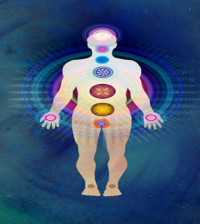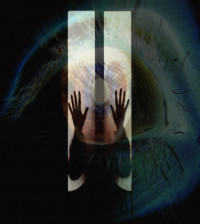- 5 Tips To Finding Peace Within Yourself
- The Do’s and Don’ts of Learning How to Accept Yourself
- How to Find Your Inner Peace and Transform Your Life
- 8 Benefits of Having an Open Mind and How to Get One
- Learn How To Be A Happier Person
- What Is The Meaning Of Life?
- Laws of Abundance – The Riches of Love and Joy
- How to Be Laid Back By Following These 9 Simple Strategies
- The meaning of confucius’ golden rule – 4 practical ways of living it
- 3 methods of unleashing the power of contentment in your life
4 Powerful Visualization Techniques

It’s no secret that visualization can be a powerful tool. Everyone has experienced some kind of visualization in their lives. Professional athletes are known for using visualization to get ‘in the zone’ before a game. Basically, they are trying to see the action before it happens so they will be better prepared and confident once out on the field. In much the same way, visualization can be useful to you in your daily life by preparing you for a variety of upcoming situations. The following four techniques are proven to be effective in promoting successful visualization.
– Treasure Map Technique. This is a visualization technique that uses a physical component as well as the obvious mental component. To try this technique, you first need to think of something you would like to visualize – for example, getting a top score on an upcoming exam. Start by drawing physical representations of all of the factors involved. You can draw yourself, a book to represent study, and maybe a building to represent the school. Make the drawings a detailed as possible. The important factor isn’t the drawings themselves, but what you are picturing as you draw them. Your mind will be visualizing the road to success the whole time you are drawing out your map. Be patient with this technique, as it will take time to become absorbed into the exercise. It will help to be in a quiet place, and turn off any distractions like a television or radio.
– Receptive Visualization. Think of this technique as watching a movie in your head, only you control the scenes. This is a more passive approach than the previous one, but can be just as effective. Again, it helps to be in a quiet place with no outside distractions. Lie back, close your eyes, and try to picture vividly the scene you want to visualize. After you get a clear image in your head, start to add people and noises to the ‘movie’. Slowly build the image until you have a whole picture of the scene and can really feel yourself being involved in the action.
– Altered Memory Visualization. This technique is focused on changing past memories to have a more positive outcome. This is especially useful for resolving memories that involved anger or resentment. Replay the scene in your mind, only replace the angry responses with more calm and controlled ones. It will take time to recreate the scene, but commit to doing this several times over. After a while, your brain will only remember the scene playing out as you have re-created it, and the uncomfortable memories of the actual event will fade away.
– Meditate. Using meditation is a great form of passive visualization that can have powerful results. As opposed to the other techniques, visualization through meditation is more of a byproduct than the main focus. When you start meditating on a regular basis, you gain access to your inner self more than you have ever before. From that inner place is where you can start to experience strong visualizations. To start, make a plan of setting aside time each day to meditate. You will get better and better at your meditation as you gain experience, so don’t be discouraged if you don’t have strong visualizations right away. The idea with meditating is to completely empty the brain and allow it to go wherever it wants. You are not actively forcing any thoughts or images into your head. Start by focusing on breathing, and let your mind do whatever it wants to do naturally. With this technique, you will start to have strong visualizations just by ‘letting go’ and allowing your brain to put on the show. These visualizations are a great insight into your mind because they are not constructed manually; rather they just occur on their own merit.








































You must be logged in to post a comment Login